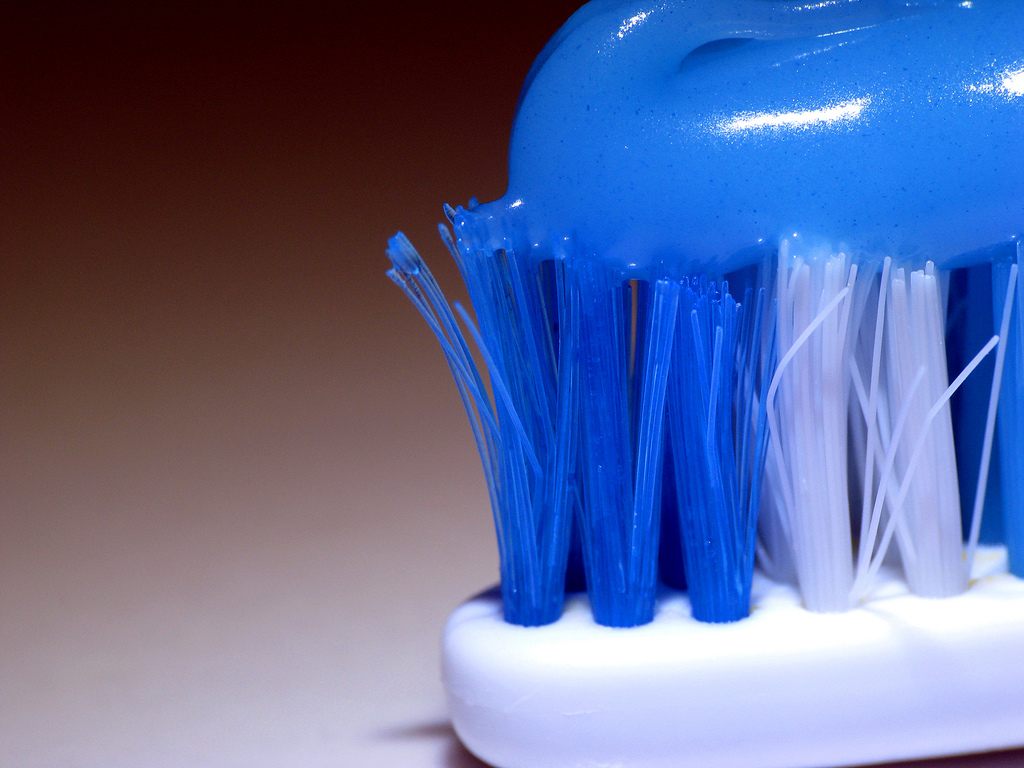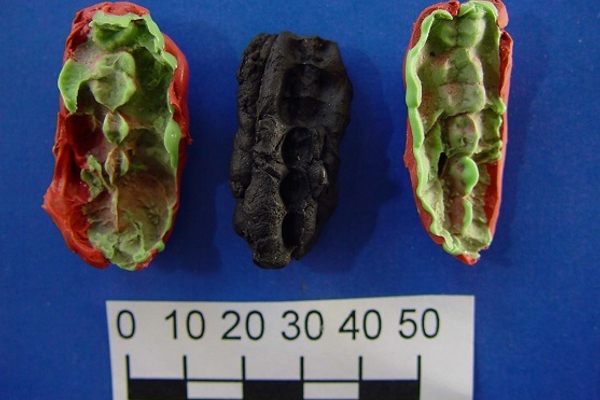The Toothbrush That Grows On Trees

Toothbrush and paste. (Photo: Jeremy Hockin/flickr)
As you eat away the rest of 2015, consider this: the fancy electric toothbrush that you spent $100 to clean the holidays off your gums on might be no better than a stick.
In the West, the toothbrush comes in hundreds of styles. Think: stiffer or more pliable bristles, tongue scrapers, rubber paddles placed alongside bristles, different colors and thicknesses of bristles, jagged patterns and curved heads pledging to reach parts of your mouth that have heretofore been horrendously, embarrassingly unclean. But throughout much of Africa and the Middle East (and exported to the Muslim world elsewhere, notably Southeast Asia), the toothbrush is grown as much as bought.
Called a “miswak”, it is the king of the teeth utensils—its simplicity does not impinge upon its effectiveness. By peeling the bark from the stick, you also eliminate the need for toothbrush’ sister consumer product, toothpaste.

Traditional miswak sticks. (Photo: Middayexpress/WikiCommons CC BY-SA 3.0)
As the oldest of the five major dental tools (toothbrush, toothpaste, floss, gum, and mouthwash), the toothbrush has probably gone through the most change. It’s also, according to dentist and Harvard faculty member Lisa Simon, the most important. “The toothbrush is a pretty great tool,” she says. “You have lots and lots of bacteria in your mouth, they’re always going to be on your teeth. But in terms of removing stuff that could get stuck in your teeth, they’re very good at their job.”
A stick-like tool with a bristle-y end dates back to well before recorded history; they’re commonly found in Babylonian ruins dating back to 3500 BC. The modern Western form, which is typically a plastic rod with nylon bristles on one end, dates back to 1938, when DuPont invented the nylon bristle, but before that, various other materials were used as brushes: animal hair (usually horse or hog), fabric, leaves, basically whatever was around.
The miswak is a version of an older toothbrush called a “chew stick.” There are trees throughout the world that, when chewed, sort of split into bristly soft fibers, very similar to a toothbrush. In India, the “neem” is very popular, but the miswakis used throughout the Muslim world.

A horse-hair toothbrush made for Napolean Bonaparte. (Photo: Science Museum London/WikiCommons CC BY-SA 2.0)
Miswak (or sometimes “siwak”) is the name of the chew stick, but it comes from a tree called Salvadora persica. (Its non-Linnaean names include “arak” and, helpfully, “toothbrush tree.”) S. persica comes from the same broad order as the brassicas, which include most of the best vegetables: broccoli, cauliflower, kale, mustard greens, cabbage, brussels sprouts. But S. persica might be the most amazing of all.
A miswak is a short stick from S. persica, about the size of a toothbrush. You peel the last inch or so of it so there’s no bark, and then chew on it until bristles form. Then you brush your teeth with it, the same as you would with any toothbrush. Except: no toothpaste necessary.

Examples of toothbrushes in 1916. (Photo: Public Domain/WikiCommons)
Here’s where miswak gets amazing: the World Health Organization, along with dozens of studies conducted by scientists around the world, have declared that miswakis at least as good at maintaining oral hygiene as a plastic toothbrush. It contains, naturally, everything that we force into a tube of toothpaste. There’s fluoride, to reduce the risk of tooth decay; abrasives, which are inserted in toothpaste to provide some more friction to scrape plaque off teeth; detergents, to whiten teeth; and an astringent flavor, somewhere between ginger and mint, to freshen breath.
A quote from a 2003 study comparing miswak to the toothbrush: “It is concluded that the miswak is more effective than toothbrushing for reducing plaque and gingivitis, when preceded by professional instruction in its correct application.” Here’s another: “Miswak embedded in agar or suspended above the agar plate had strong antibacterial effects against all bacteria tested.”
And you can grow it yourself.








Follow us on Twitter to get the latest on the world's hidden wonders.
Like us on Facebook to get the latest on the world's hidden wonders.
Follow us on Twitter Like us on Facebook